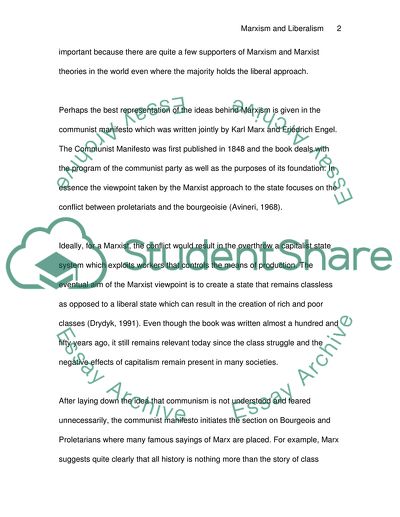Cite this document
(Similarities and Differences in Marxism and Liberalism Essay Example | Topics and Well Written Essays - 1250 words, n.d.)
Similarities and Differences in Marxism and Liberalism Essay Example | Topics and Well Written Essays - 1250 words. https://studentshare.org/sociology/1541787-outline-the-similarities-and-differences-in-the-marxist-and-liberal-approaches-to-understanding-the-state
Similarities and Differences in Marxism and Liberalism Essay Example | Topics and Well Written Essays - 1250 words. https://studentshare.org/sociology/1541787-outline-the-similarities-and-differences-in-the-marxist-and-liberal-approaches-to-understanding-the-state
(Similarities and Differences in Marxism and Liberalism Essay Example | Topics and Well Written Essays - 1250 Words)
Similarities and Differences in Marxism and Liberalism Essay Example | Topics and Well Written Essays - 1250 Words. https://studentshare.org/sociology/1541787-outline-the-similarities-and-differences-in-the-marxist-and-liberal-approaches-to-understanding-the-state.
Similarities and Differences in Marxism and Liberalism Essay Example | Topics and Well Written Essays - 1250 Words. https://studentshare.org/sociology/1541787-outline-the-similarities-and-differences-in-the-marxist-and-liberal-approaches-to-understanding-the-state.
“Similarities and Differences in Marxism and Liberalism Essay Example | Topics and Well Written Essays - 1250 Words”. https://studentshare.org/sociology/1541787-outline-the-similarities-and-differences-in-the-marxist-and-liberal-approaches-to-understanding-the-state.


